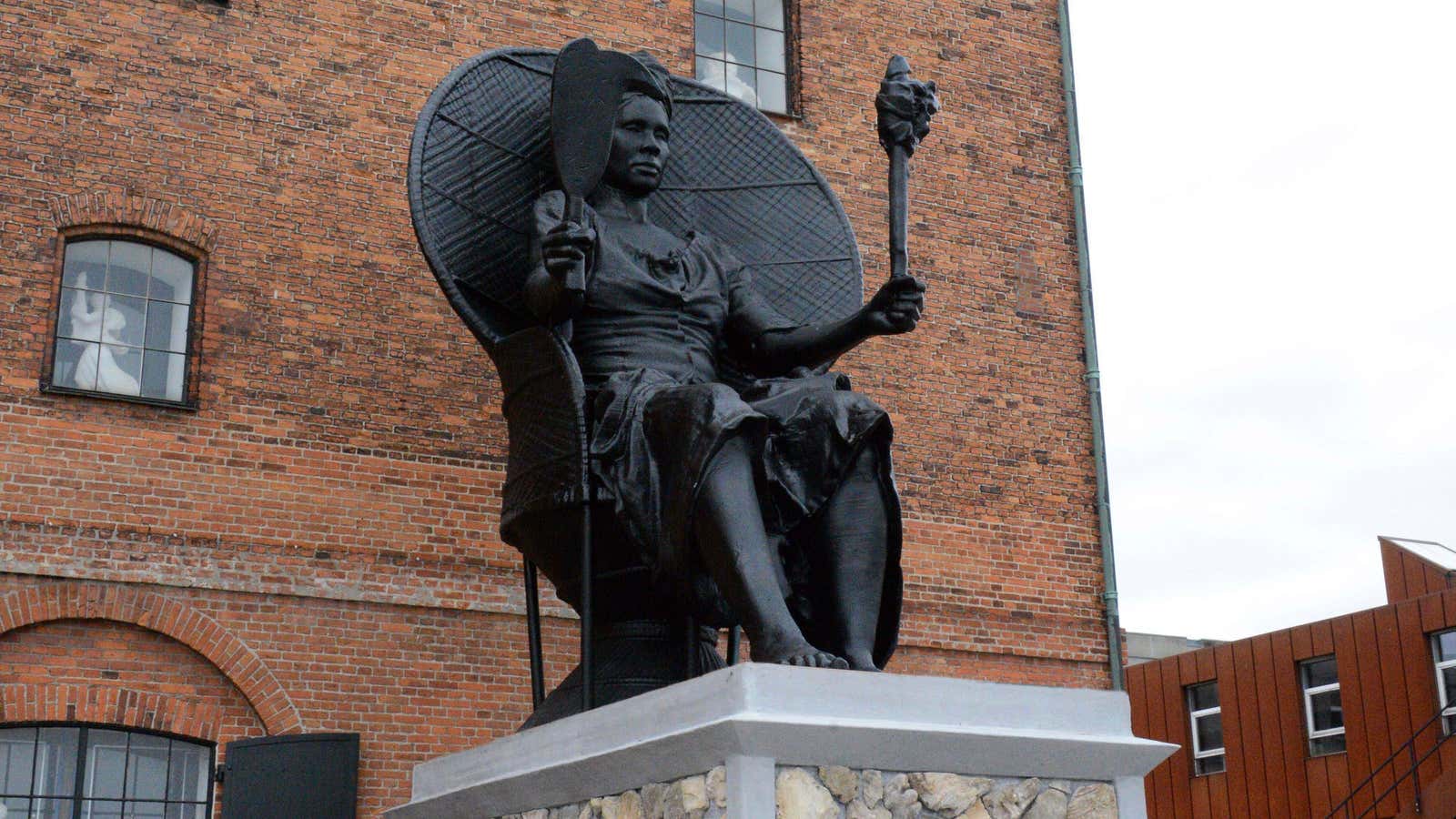Denmark now has its first public monument to a black woman.
The striking statue, entitled “I am Queen Mary”, celebrates Mary Thomas—a 19th-century rebel who led the largest labor revolt in Danish colonial history. Danish artist Jeannette Ehlers and Virgin Islander artist La Vaughn Belle say they teamed up to create a work that “challenges Denmark’s forgotten colonial past,” according to a recent statement. It is thought to be Denmark’s first public monument (paywall) to a black woman.
Thomas is known as the “Queen of the Fireburn,” for the role she played in the uprising of 1878. Workers rebelled in the Danish colony St Croix (now part of the US Virgin Islands) after conditions did not meaningfully improve after the abolition of slavery. Many houses, mills, shops, and plantations were burnt down during the rebellion, which is locally known as “the Fireburn.” Thomas was one of three women who came to symbolize the resistance, later referred to as “queens” by locals. The rebellion was brutally suppressed and the three queens were arrested and served their prison sentence in Denmark.
Belle said in a statement: “Who we are as a society is largely about who we remember ourselves to be. This project is about challenging Denmark’s collective memory and changing it.” Ehlers claims that 98% of the statues in Denmark are of white men. “So like the Queens of the Fireburn took action and fought against the oppressive colonial system, we are confronting present day’s racism and Eurocentrism by claiming a space for our narratives.”
The monument currently sits near Copenhagen’s West Indian Warehouse, which once stored goods produced in Denmark’s former Caribbean colonies. It’s unveiling comes at the end of a centennial year commemorating the sale by Denmark of three islands— St. Croix, St. John and St. Thomas—to the US.
The monument’s figure is a hybrid of the two artists’ bodies, created using 3D-scanning technology. Thomas is holding a torch in one hand and cane bill in the other, which the artists say is “a reference the resistance strategies used by the colonized in their struggles for freedom.” Her seated pose is meant to evoke the iconic 1967 photograph of Huey P. Newton, founder of the Black Panther Party.
“Never before has a sculpture like this been erected on Danish soil,” said Henrik Holm, Senior Research Curator at the National Gallery of Art, in a press release. ”Now, Denmark is offered a sculpture that addresses the past. But it is also an artwork for the future.”
While Denmark is widely known as the happiest country in the world, it has struggled to come to terms with what one journalist has dubbed “latent racial hostility” (paywall). Racial tensions have worsened as a result of Europe’s recent refugee crisis. The record-breaking influx of migrants bolstered the Danish People’s Party, now the country’s second-largest political party, which ran on an unapologetically anti-immigration populist platform. The government has passed 67 anti-immigrant regulations since 2015 (link in Danish). This crackdown on migrants led to an 85% drop in asylum requests over the past two years.
